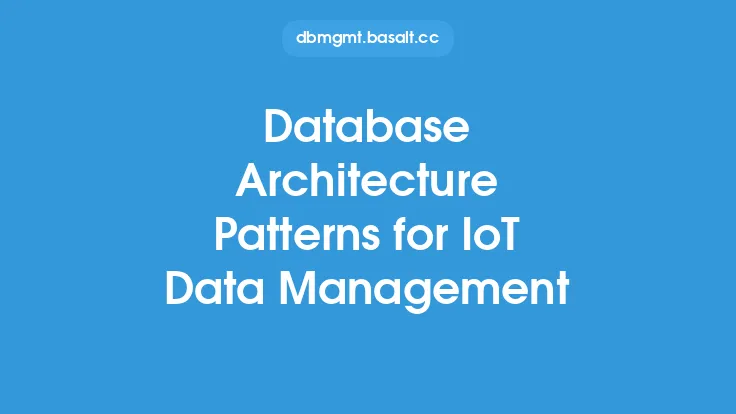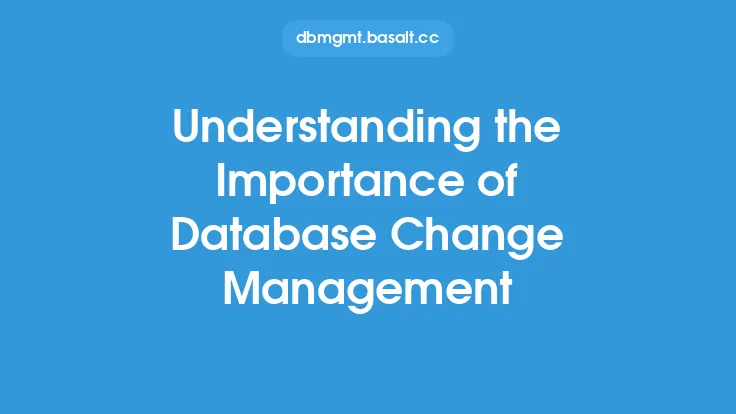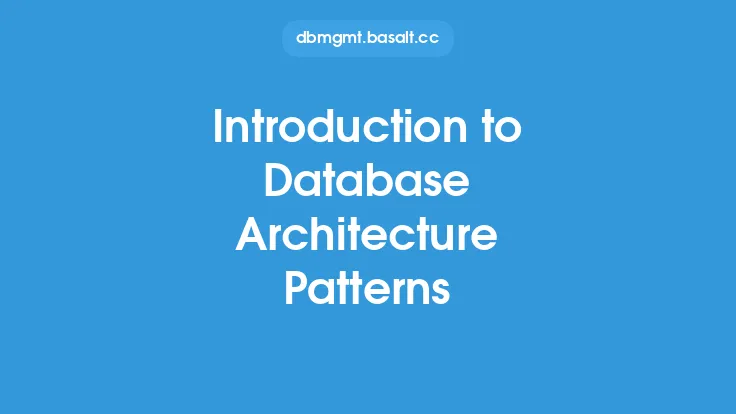When designing a database architecture for a microservices-based application, several factors need to be considered to ensure the system is scalable, maintainable, and performs well. Microservices architecture is an approach to software development where an application is composed of small, independent services that communicate with each other using APIs. Each service is responsible for a specific business capability and can be developed, tested, and deployed independently. In this context, the database architecture plays a crucial role in supporting the overall system's functionality and performance.
Introduction to Microservices Database Architecture
Microservices database architecture refers to the design and organization of databases in a microservices-based application. In a monolithic architecture, a single database is often used to store all the data, which can lead to tight coupling between different components of the application. In contrast, microservices database architecture emphasizes loose coupling between services, which requires a different approach to database design. Each microservice typically has its own database, which allows for greater flexibility and scalability. However, this approach also introduces new challenges, such as data consistency, transaction management, and query complexity.
Database per Service
One of the key principles of microservices database architecture is to have a separate database for each service. This approach is known as "database per service" or "schema per service." Each service owns its database and is responsible for managing its data. This allows for greater autonomy and flexibility, as each service can choose the database technology that best fits its needs. For example, a service that requires high-performance data retrieval might choose a relational database, while a service that requires flexible schema design might choose a NoSQL database. Having a separate database for each service also helps to reduce coupling between services, as changes to one service's database do not affect other services.
Data Consistency and Integrity
In a microservices-based application, ensuring data consistency and integrity across multiple databases can be challenging. Since each service has its own database, there is no single, centralized database that can enforce data consistency. To address this challenge, microservices often use techniques such as event sourcing, command query responsibility segregation (CQRS), and sagas. Event sourcing involves storing the history of an application's state as a sequence of events, which allows for auditing and debugging. CQRS involves separating the responsibilities of handling commands (writes) and queries (reads), which helps to reduce complexity and improve performance. Sagas involve using a transactional approach to manage multiple services, which helps to ensure data consistency across services.
Distributed Transactions
Distributed transactions are a critical aspect of microservices database architecture. Since each service has its own database, transactions that span multiple services require special handling. Traditional transaction management techniques, such as two-phase commit, can be used, but they can be complex and may not be suitable for all use cases. Alternative approaches, such as eventual consistency and transactional APIs, can be used to manage distributed transactions. Eventual consistency involves allowing data to be temporarily inconsistent across services, with the understanding that it will eventually become consistent. Transactional APIs involve using APIs that provide transactional guarantees, such as atomicity and isolation.
Query Complexity
In a microservices-based application, querying data across multiple services can be complex. Since each service has its own database, queries that span multiple services require special handling. Techniques such as API composition, data virtualization, and data replication can be used to manage query complexity. API composition involves using APIs to retrieve data from multiple services and combining it into a single response. Data virtualization involves creating a virtualized view of data across multiple services, which allows for querying data without having to retrieve it from each service individually. Data replication involves replicating data across multiple services, which allows for faster querying and improved performance.
Data Integration and Interoperability
Data integration and interoperability are critical aspects of microservices database architecture. Since each service has its own database, integrating data across services can be challenging. Techniques such as data mapping, data transformation, and data mediation can be used to manage data integration and interoperability. Data mapping involves creating a mapping between the data models of different services, which allows for data exchange and integration. Data transformation involves transforming data from one format to another, which allows for data exchange and integration. Data mediation involves using a mediator service to manage data exchange and integration between services.
Security and Access Control
Security and access control are critical aspects of microservices database architecture. Since each service has its own database, ensuring that data is secure and access is controlled is essential. Techniques such as authentication, authorization, and encryption can be used to manage security and access control. Authentication involves verifying the identity of users and services, which allows for secure access to data. Authorization involves controlling access to data based on user and service roles, which ensures that data is only accessible to authorized users and services. Encryption involves encrypting data to prevent unauthorized access, which ensures that data is secure even if it is accessed by unauthorized users or services.
Monitoring and Troubleshooting
Monitoring and troubleshooting are critical aspects of microservices database architecture. Since each service has its own database, monitoring and troubleshooting can be complex. Techniques such as logging, metrics, and tracing can be used to manage monitoring and troubleshooting. Logging involves recording events and errors, which allows for debugging and troubleshooting. Metrics involve collecting data on system performance, which allows for monitoring and optimization. Tracing involves tracking the flow of requests and data, which allows for debugging and troubleshooting.
Best Practices
To ensure a successful microservices database architecture, several best practices should be followed. These include:
- Using a separate database for each service to reduce coupling and improve flexibility
- Implementing data consistency and integrity techniques, such as event sourcing and CQRS
- Using distributed transaction management techniques, such as eventual consistency and transactional APIs
- Managing query complexity using techniques, such as API composition and data virtualization
- Ensuring data integration and interoperability using techniques, such as data mapping and data transformation
- Implementing security and access control measures, such as authentication and encryption
- Monitoring and troubleshooting using techniques, such as logging and tracing
By following these best practices, developers can create a scalable, maintainable, and high-performing microservices database architecture that supports the needs of their application.





